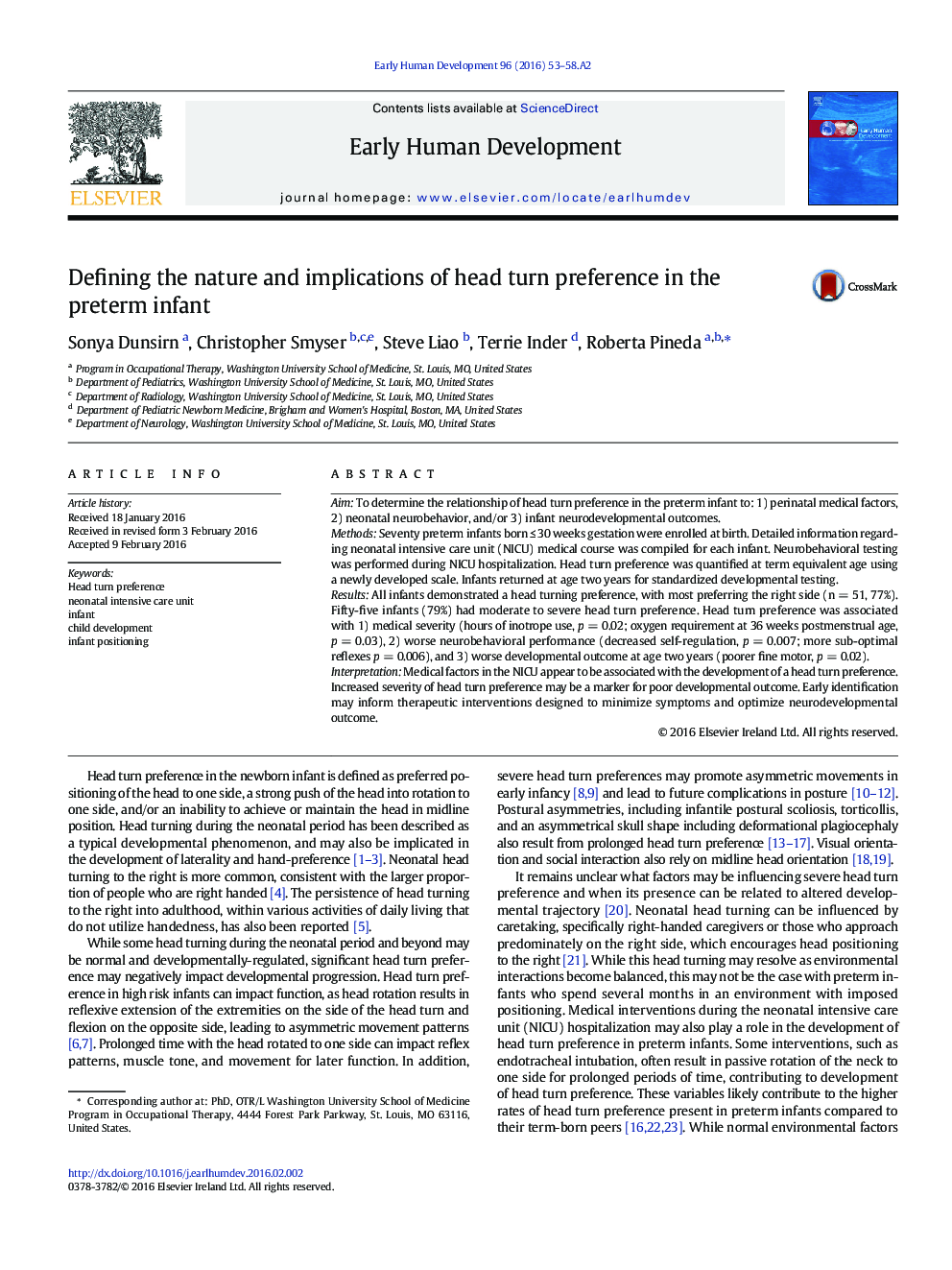| کد مقاله | کد نشریه | سال انتشار | مقاله انگلیسی | نسخه تمام متن |
|---|---|---|---|---|
| 3916455 | 1599470 | 2016 | 8 صفحه PDF | دانلود رایگان |
• Head turn preference is common in preterm infants.
• Head turn preference to the right is more common.
• NICU medical factors are associated with head turn preference.
• Head turn preference is associated with poorer developmental outcome.
• A scale has been developed to quantify head turn preference.
AimTo determine the relationship of head turn preference in the preterm infant to: 1) perinatal medical factors, 2) neonatal neurobehavior, and/or 3) infant neurodevelopmental outcomes.MethodsSeventy preterm infants born ≤ 30 weeks gestation were enrolled at birth. Detailed information regarding neonatal intensive care unit (NICU) medical course was compiled for each infant. Neurobehavioral testing was performed during NICU hospitalization. Head turn preference was quantified at term equivalent age using a newly developed scale. Infants returned at age two years for standardized developmental testing.ResultsAll infants demonstrated a head turning preference, with most preferring the right side (n = 51, 77%). Fifty-five infants (79%) had moderate to severe head turn preference. Head turn preference was associated with 1) medical severity (hours of inotrope use, p = 0.02; oxygen requirement at 36 weeks postmenstrual age, p = 0.03), 2) worse neurobehavioral performance (decreased self-regulation, p = 0.007; more sub-optimal reflexes p = 0.006), and 3) worse developmental outcome at age two years (poorer fine motor, p = 0.02).InterpretationMedical factors in the NICU appear to be associated with the development of a head turn preference. Increased severity of head turn preference may be a marker for poor developmental outcome. Early identification may inform therapeutic interventions designed to minimize symptoms and optimize neurodevelopmental outcome.
Journal: Early Human Development - Volume 96, May 2016, Pages 53–60
